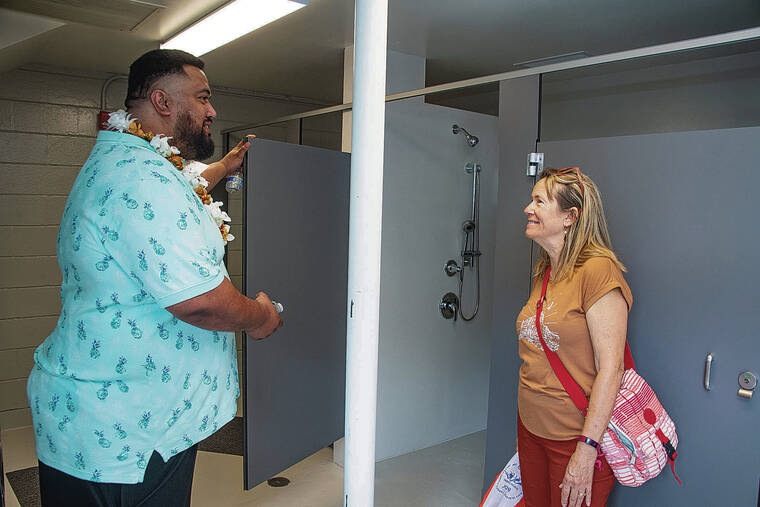The Institute for Human Services on Wednesday unveiled a facility for a new approach to treating Oahu’s most troubled homeless people — a 24-hour triage center.
The facility will provide short-term mental health and substance abuse detox treatment to clients who are too unstable for a homeless shelter but not medically fragile enough to require paramedic services and treatment in a hospital.
James Ireland, director of the city’s Emergency Services Department, called IHS’ ‘Imi Ola Piha a testament to how seriously officials are working to address homelessness at various levels — now with an emphasis on clients suffering from mental health and substance abuse problems.
‘Imi Ola Piha in early April expects to receive its first clients, who will be referred by Honolulu Police Department community policing officers they deal with on the street.
While at the center, clients also will have access to behavioral health care, medical treatment, case management, counseling and other services.
Currently a third of IHS clients use illegal drugs when entering its shelters and over 50% are estimated to have mental health issues, according to IHS.
The building that is now the new triage center was a dilapidated, two-story pet hospital next to IHS’ women’s shelter on Kaaahi Street. It has beds for eight clients and seven kennels for their animals, which is a key to getting homeless clients with pets off the street who otherwise refuse to abandon their animals.
With space for only eight clients who are expected to stay up to a week, Ireland said: “Clearly we need to recreate it” across Hawaii.
Thursday’s unveiling of IHS’ triage center attracted a who’s who list of state and county officials working to reduce homelessness on Oahu: Mayor Rick Blangiardi, Lt. Gov. Sylvia Luke, HPD Chief Arthur “Joe” Logan, City Prosecutor Steve Alm, Ireland, members of the Honolulu City Council, state legislators, hospital representatives and several police officers and social service homeless outreach workers.
Luke, when she was a member of the House, teamed up with state Rep. Scott Nishimoto to secure $1.6 million in grants-in-aid for the triage center.
The money was part of $50 million in grants-in-aid allocated to about 180 organizations that had been tied up until Gov. Josh Green released it in December, including the largest disbursement of $1.6 million to IHS.
“This was the biggest grant by far,” Nishimoto told the Honolulu Star-Advertiser during a tour of the triage center. “The size of the grant shows the Legislature wants to emphasize homeless services.”
Luke told the Star-Advertiser during the tour that she was impressed by how quickly IHS turned the money into reality. The grant includes one year of operational costs for the center and its staff of 20, including a pharmacist, on-site nurses, mental health and detox health care workers and security.
“We need something like this,” Luke said.
Connie Mitchell, IHS’ executive director, said the triage center is intended to address “a gap in our service system.”
And teaming up with HPD officers who regularly deal with the chronically homeless makes sense, she said.
“They probably see the homeless as much as we do,” Mitchell said.
Blangiardi said at a brief ceremony that he’s asked nearly every day about what he’s doing about homelessness.
“This is something we’re doing about it,” he said.
Mitchell told those who gathered at the triage center that it’s designed to address “the individuals that are left behind. … This will lead to major solutions.”
Mitchell began tearing up as she acknowledged all of those who attended and said that homelessness is neither a singular county nor state issue.
“It is our issue,” she said.






